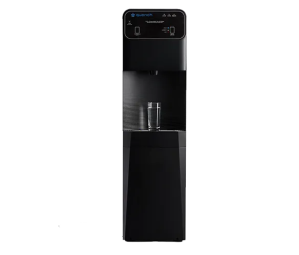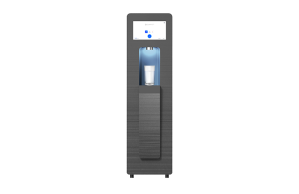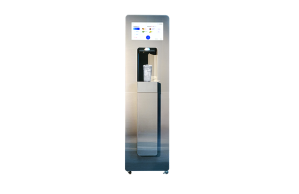
The Hidden Cost of Dehydration in the Workplace: How Hydration Impacts Productivity, Focus and Employee Well-Being
Dehydration is silently affecting your workforce, increasing fatigue and reducing productivity — even if you haven’t heard a word about anyone being thirsty. Even subtle drops in hydration can make it difficult to focus, eroding employee well-being while making it more difficult to achieve your company’s goals. Whether you’re an HR pro or an operations leader, you need to understand the risk of dehydration in the workplace.
The good news is that dehydration doesn’t have to derail your business. Once you understand the risks, you can implement practical strategies to support a healthier, higher-performing team.
How dehydration impacts the body and the brain at work
Even mild dehydration can change the way the brain works. For example, researchers from Penn State University report that typical dehydration makes it more difficult for middle-aged and older adults to pay attention to tasks lasting more than 14 minutes. Typical dehydration is the fluid loss that occurs with everyday activities.
Fluid loss can also affect processing speed, making it more difficult for employees to receive and respond to information. When employees can’t think clearly, efficiency declines. Workplace dehydration can even interfere with an employee’s ability to make quick decisions.
Cognitive changes aren’t the only concern, as hydration status also affects mood. When employees are dehydrated at work, they’re more likely to feel irritated or anxious. Sudden mood changes interfere with effective collaboration and make it more difficult for team members to deliver excellent customer service.
In some cases, fluid loss leads to reduced muscle strength. If you employ warehouse workers, custodians, landscapers or other employees who perform manual labor, dehydration can quickly lead to lower productivity. Proper hydration supports mental clarity and stamina, ensuring employees can tackle any task.
The productivity penalty: how dehydration drags down output
Dehydration at work doesn’t affect everyone the same way, but even small declines in performance can have a major impact on output. For example, if 20 employees lose focus for 5 minutes every hour, that’s 800 minutes of lost productivity during an 8-hour shift. In other words, dehydration can wipe out almost two employees’ worth of gains every day.
Jobs that require sustained attention are especially vulnerable to the effects of dehydration. This includes database analysts, customer service representatives, proofreaders and machine operators.
Workplace dehydration also puts employees in safety-sensitive positions at risk. For instance, slow reaction times can cause commercial truck drivers to get into accidents. Low energy levels can also contribute to an increased risk of work-related injuries.
Safety, errors, and presenteeism: the hidden operational risk
Dehydration impairs short-term memory, reduces attentiveness and leads to lower levels of accuracy when completing critical tasks. Fluid loss can also affect critical thinking and reaction times. All these effects of dehydration can have a significant impact on workplace safety.
If employees can’t focus, they might not notice hazardous conditions, preventing them from taking steps to protect themselves. Slower reaction times can also interfere with a worker’s ability to respond quickly to a hazard. For example, if a rack of merchandise tips over, a few seconds can make the difference between escaping unscathed and sustaining a serious injury.
Safety issues aren’t the only concern. Dehydration has also been shown to contribute to presenteeism, which is when employees are physically present but unable to function fully due to an illness or physical condition. Presenteeism costs employers 10 times more than absenteeism, making it a serious issue in the workplace.
Morale and satisfaction: why employees feel the effects
When you think about the employee experience, you probably focus on things like health benefits and paid time off. Hydration is often overlooked, but it plays a surprisingly important role in determining how employees feel when they’re at work. When employees lack access to clean, good-tasting water, it can signal that their health and comfort are low on the list of priorities.
Old water coolers, no refill stations and lukewarm tap water tell employees that their comfort isn’t important, which can contribute to poor morale. When morale is low, employees aren’t as productive as they could be. Poor morale also increases absenteeism and turnover, both of which can cost an employer significant amounts of money.
Why most workplaces aren’t doing enough
Preventing dehydration in the workplace isn’t as difficult as you might think, but many employers overlook it because they think it’s “handled” already. Managers look at break room fridges filled with half-empty bottles of water and assume that employees are drinking enough. Or maybe your break room has a tap, but it’s rusted out or filled with minerals that make the water taste bad.
No matter how much you support workplace wellness, your hydration strategy may be failing if you notice any of the following:
- Employees bring their own water from home because they don’t want to use your taps or coolers.
- Your facilities department receives regular complaints about the taste, smell or temperature of the tap water on your premises.
- You have an increase in the number of heat-related illnesses reported each year.
- Your company has high rates of turnover in physically demanding roles.
- Employees rely on soda and other high-calorie beverages instead of drinking water, which can make dehydration worse.
Smarter solutions: filtration and bottleless hydration systems
With the hydration solutions offered by Culligan Quench, there’s no need for employees to go thirsty. Our bottleless water coolers and filtration solutions help employers improve workplace hydration without wasting plastic. Culligan Quench products serve as a visible reminder that you care about employee well-being and take workplace hydration seriously.
Although you may use more water because employees will drink more, bottleless coolers eliminate waste, making it easier to meet your company’s sustainability goals. Bottle-free coolers are also less expensive, as there’s no need to replace empty water jugs.
Hydration isn’t a perk — it’s a performance strategy
Whether you own a small business or manage a team of HR professionals, you need to address dehydration in the workplace before it costs you dearly. Investing in a hydration program is one of the most cost-effective ways to improve safety and show employees that you value their well-being. The next step is to evaluate your current setup and connect with Culligan Quench for a solution that’s tailored to your needs.
Authored by

Elizabeth Smith
Elizabeth Smith is a seasoned writer with a background in science and technology, now focused on workplace wellness, sustainability, and smart business solutions. With more than a decade of experience writing for universities and private companies in the engineering and tech sectors, she brings a research-driven approach to every topic.
Reviewed by

Ted Hertz, Vice President of Commercial Drinking Water Category, Culligan International
Recommended products
Culligan Quench has an advanced suite of point-of-use systems that are designed to meet the needs of workplaces of all shapes and sizes. Here are some products we recommend for your business.
Q12 Touchless Bottleless Water Cooler
Available with quenchWATER+ electrolyte water

Q14 Bottleless Water Cooler
Available with quenchWATER+ electrolyte water
